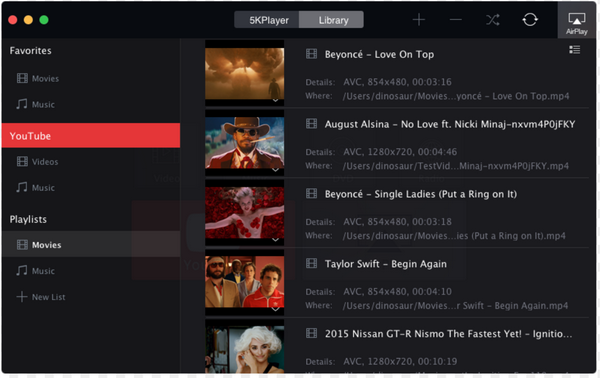Finally, I download some AVCHD Codecs like FFDshow and VLC (VideoLAN Client) in order to play AVCHD files. Nevertheless, the playback is choppy and noisy when importing them to Mac computer. In order to find out the truth, I tested several times and wondered whether I can use a professional AVCHD Converter for Mac. Extract audio from AVCHD files. It is very convenient to extract audio from AVCHD videos and convert it to MP3, FLAC, AAC, AC3, AIFF, WAV, WMA, OGG, etc. Apart from AVCHD video files, like MTS or M2TS, this Mac AVCHD Video Converter can convert other video files that you download from online sites, like WMV, MKV, MP4, AVI, FLV videos in standard quality to audios.
Avchd Files On Mac

Avchd To Mac
To upload AVCHD, you will need iMovie 08 or a current version of FInal Cut or Final Cut Express.
For iMovie 08, you must connect the camera and use the iMovie 08 import screen. You do not have to do anything special to bring up the import screen. iMovie will detect that a camera is attached and bring up the screen automatically, but iMovie must be running. iMovie 08 will look in all attached devices (cameras, memory sticks, external drives) to see if there are certain files and folders in the root directory. If there are, the device is recognized as a camera.
If you wish to drag your files from the memory stick to the Mac and import from there, the solution is to create a disk image (using Disk Utility) and drag the entire contents (even empty folders) to the disk image. Now you have a device with the right stuff in the root directory, and when the disk image is mounted, it will be recognized as a camera.
The AVCHD files are highly compressed GOP. iMovie will convert the AVCHD into Apple Intermediate Codec for editing.
For iMovie 08, you must connect the camera and use the iMovie 08 import screen. You do not have to do anything special to bring up the import screen. iMovie will detect that a camera is attached and bring up the screen automatically, but iMovie must be running. iMovie 08 will look in all attached devices (cameras, memory sticks, external drives) to see if there are certain files and folders in the root directory. If there are, the device is recognized as a camera.
If you wish to drag your files from the memory stick to the Mac and import from there, the solution is to create a disk image (using Disk Utility) and drag the entire contents (even empty folders) to the disk image. Now you have a device with the right stuff in the root directory, and when the disk image is mounted, it will be recognized as a camera.
The AVCHD files are highly compressed GOP. iMovie will convert the AVCHD into Apple Intermediate Codec for editing.

Jul 4, 2008 5:40 AM
Opening Avchd Files On Mac
